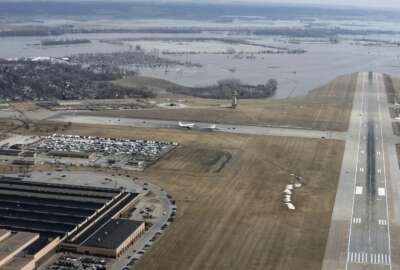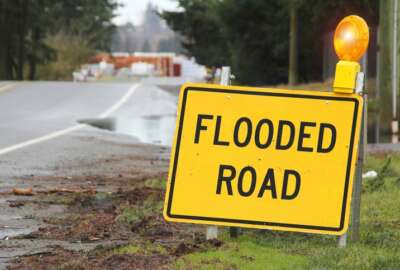
What military bases are most vulnerable to climate change? A new DoD report will tell you
The Defense Department just gave Congress a list of the 10 most susceptible installations to climate change for each military service.
Some of the military’s largest and well-known bases are directly threatened by climate change and its effects, according to a new report from the Defense Department.
Ft. Hood in Texas, Naval Air Station Key West in Florida and Hill Air Force Base in Utah topped the lists of the most susceptible installations to recurrent flooding, drought, desertification, wildfires and thawing permafrost.
The report assesses the current and potential threat to the top 10 bases most vulnerable to climate change in the United States for each military service. Potential threats are defined as likely to happen within the next 20 years.
Hill Air Force Base was found to be the United States’ most threatened installation. The report states it currently has issues with flooding, drought, desertification and wildfires and has the potential for more within the next 20 years.
Other installations making the top 10 list of each service include Naval Base San Diego, California, and the Washington Navy Yard. Joint Base Andrews, Maryland; Beale Air Force Base, California; and Eglin Air Force Base, Florida, also made the list. On the Army side Ft. Meade, Ft. Detrick — both in Maryland — and Ft. Bragg in North Carolina were on the top 10 list.
Marine Corps bases were not included in the list.
The report comes as the military is asking Congress for emergency funding to repair bases affected by extreme weather in the last year. The Air Force is asking for nearly $5 billion to fix up Air Force Base Tyndall, which was ravaged by Hurricane Michael last year, and Offutt Air Force Base in Nebraska, which was damaged by flooding last month.
The Marine Corps recently announced Congress approved the movement of $400 million from other accounts to repair Camp Lejeune in North Carolina. More than 100 buildings on the base were damaged by Hurricane Florence and the Marines estimate it will cost about $3.6 billion to repair the base.
Former DoD Principal Deputy Comptroller John Conger told Federal News Network that DoD has underinvested in facilities over the years, making them more susceptible to climate change issues.
“This underinvestment is already a challenge,” Conger said. “When you add a layer of stress from climate change, whether it’s extreme weather or recurrent flooding or drought or wildfire, you are stressing a base infrastructure that has already had some investment shortfalls. Now the question is how can they address that issue in a greater context.”
House Armed Services Subcommittee on Intelligence and Emerging Threats Chairman Jim Langevin (D-R.I.) was not impressed by DoD’s work on the report.
“Like a student rushing to finish a term paper, the Department of Defense made a desperate attempt to address the concerns I raised about their climate report before the secretary testified,” Langevin said in a statement to Federal News Network. “When it comes to our national security, however, there are no ‘As for effort.’ The department’s methodology remains opaque. The revised report continues to leave off overseas bases, and it fails to include massive military installations like Camp Lejeune. Most importantly, it continues to lack any assessment of the funds Congress will need to appropriate to mitigate the ever increasing risks to our service members.”
Langevin was responsible for the 2018 national defense authorization bill language that required the report.
DoD sent a preceding report on climate change to Congress in January. That report said 53 of 79 mission critical bases are vulnerable to recurrent flooding and 60 of those installations will face that threat in the next 20 years. Additionally, 43 of the 79 bases are currently susceptible to drought and 48 will be in the next 20 years. Wildfires also pose a threat; 36 bases on the list are currently at risk, while 43 will be over the next two decades.
Langevin and other House Armed Services Committee members told DoD that the first report did not follow all of the criteria outlined in law.
“I have repeatedly made myself available to the department to clarify the intent behind the specific language of the statute providing for the climate report,” Langevin said. “No one from the Department has ever taken me up on my offer. Given this record, the assurances from the secretary that he cares about resiliency ring hollow. It is clear to me that Congress will continue to need to lead in order to address this urgent national security priority.”
DoD tried to justify the way it presented the information.
“What we wanted to present were those installations that we knew were important,” Robert McMahon, DoD assistant secretary for sustainment, told members of the House Appropriations Military Construction, Veterans Affairs and Related Agencies Subcommittee last month. “There was a decision made that what we ought to do is focus on those installations that were most important. The 79 that we identified were identified by the Department of Defense as mission assurance installations, which we believe got to the heart of what the question was.”
Copyright © 2025 Federal News Network. All rights reserved. This website is not intended for users located within the European Economic Area.
Scott Maucione is a defense reporter for Federal News Network and reports on human capital, workforce and the Defense Department at-large.
Follow @smaucioneWFED






